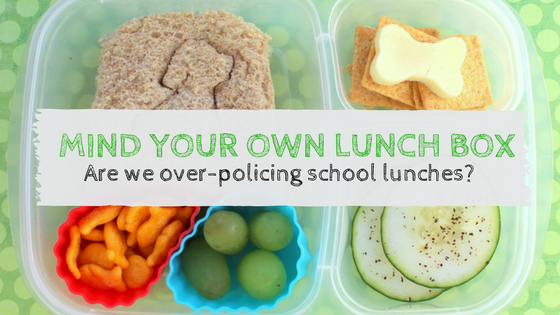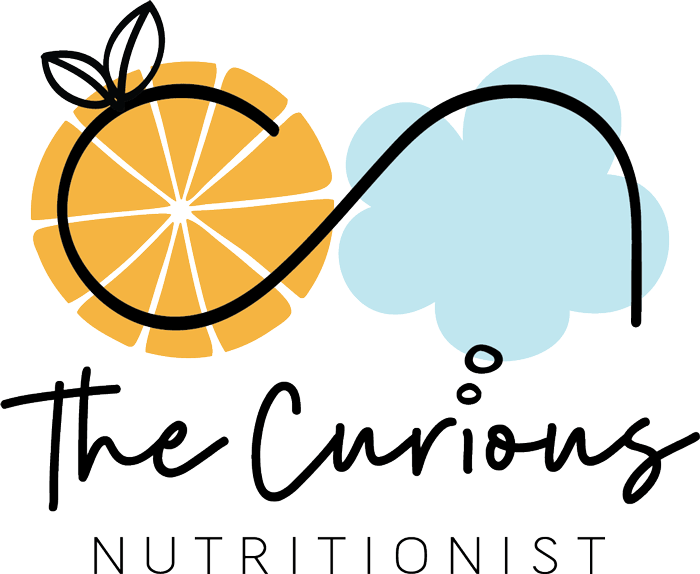As the school year begins here in Australia so does the lunch box routine. Over the last few years school lunch boxes have become a battleground as a means to fight obesity and also to identify what’s considered healthy and unhealthy. You’ll read in mainstream media that a number of schools around Australia are implementing ‘healthy eating’ policies. These policies can mandate what can or cannot be provided in a lunch box with monitoring of this by schools. While this may be a means to manage or influence healthy eating it also places a considerable strain on parents, children and teachers.
Schools have a brilliant opportunity to bring about behaviour change because let’s be honest, that’s what they do best. How do you think a child learns to read, write or problem solve in maths? They’re exposed to a variety of developmentally appropriate strategies to employ a new skill set (behaviour) to progress in the learning. As someone who has studied child development and now childhood nutrition, I implore a pull back on the approach of lunchbox policing and to reconsider the purpose of such policies. Are these policies really helping support parents in feeding their children or creating more problematic feeding behaviours long term? I would argue for the latter and here is my evidence-based response.
Let’s rethink the valued added language about food
The mere labelling of food as ‘good, bad, healthy, unhealthy’ is problematic. The reason being that using value labelled terms like this is very confusing for a developing brain to understand. Young children do not have the cognitive capacity to understand these abstract concepts.
In education we refer to the brain as a “meaning making motor” and build learning around different sensory stimuli. This is where we encourage an internal narrative to think about the learning process. An important aspect of this internal dialogue is the emotion that’s attached to it. Vygotsky, a Russian psychologist that focussed on the sociocultural development of learning talked about ‘thought being language turned inwards’.
Unfortunately children can associate language like, ‘if I eat bad food, that means I’m a bad person and if I eat good food, I’m a good person.’ This is the common kind of language that we use for ‘sometimes foods’. It’s important that our external narrative, so how we talk about food with children becomes our internal narrative. As adults we communicate with emotion, especially when it comes to placing judgement on food. Food is really something that’s morally neutral and yes, food it’s just a noun. Our communication about food and the language we associate with it forms our future relationship with it. It would be wonderful if we can learn shift our thinking into a different space about this.
Children are innate eaters
Children are born with an innate ability to tune into their hunger and satiety. Basically, children are pretty good at eating enough to maintain an energy balance. Children’s genetic makeup and their environment influences how they self-regulate their food intake. The more we interfere with this as a means to control the feeding experience, the more we can create problematic feeding behaviours, which in turn creates stress. Stress won’t allow the body to accept food willingly if the emotional response is too great.
The social aspect of eating is a valuable learning experience especially when there’s no pressure to eat or an expectation that everything served needs to be eaten. The school environment allows children to be exposed to positive role modelling of peers accepting of a variety of foods. Children will feel safe and learn that the food is safe to eat. Safe foods are those that children readily eat. Not all children grow to like all foods on initial introduction but take many exposures before willing to taste or accept. The eating experience is one that needs to be relaxed, joyful and comforting.
The ‘GOLD’ standard for feeding children
The gold standard for feeding children called ‘The Division of Responsibility (DoR)’ by Ellyn Satter is a proven model reinforced by Dietitians and Nutritionists worldwide.
This pertains to the following:
THE PARENT is RESPONSIBLE for WHAT, WHEN & WHERE a child is fed.
THE CHILD is ALWAYS responsible for HOW MUCH and WHETHER to eat the food offered by the parent.
If we add the role of the SCHOOL or TEACHER, this would be in support of WHEN and WHERE to eat.
How can schools help in feeding children?
– Schools can be respectful of each of the roles of Ellyn Satter’s DoR approach.
– Schools can support parents in feeding their children by allowing enough time to eat in a relaxed environment.
– They trust that children can feed their body’s enough food. This may include not eating everything in the lunch box.
– Allow children to have a water bottle on their table to sip on throughout the day to maintain hydration.
– Insist that children are seated when eating as this will aid and improve digestion.
– Allow children to eat without judgement about food.
Where to go with school policy development?
Policy development around healthy eating requires careful forethought and evidence-based research that considers the needs of the school community. Looking differently about what we can add to teachers, parents and children’s skill set and literacy about food and eating is just a start. Engaging with parents in conversations about the importance of health in context of child development and how it impacts on growth and learning should be the centre of policy development. Schools have a powerful position to nurture the wellbeing of communities. Let’s look at how we can do it differently and do it better.



Another great article Kelly. I would also like to add that some schools have changed “eating times” around. I.e. Lunch is at 10:30 in the morning and recess is at 1:00pm. By the time a child returns home (this particular school I have direct knowledge of finishes at 2:40pn, children are ready for a whole other meal! The reasoning behind this is that children will eat their “healthy options” first. This in practice does not happen as kids as you point out will eat that they want to eat. This routine, throws kids out from family routines, as I am certain families do not eat lunch at 10:30 , but rather would have a lighter snack if they so desire. My children were at a school like this, and my kids came home wanting a second lunch. Since changing schools to one that has lunch at around 1, recess at 11, both my children have slimmed down., without me changing a thing in our household or what I serve up. The reason, they come home without being famished wanting to raid cupboards. When kids have a proper breakfast at 8, 10:30 is usually too early and hence why half the lunch that was packed comes home (And generally inedible) and they come home hungry and ready to eat anything in sight. Additionally, this school also only allowed 10 minutes for kids to eat. For any parent who knows, that is not enough for children who are slow eaters. And children were not allowed to take food with them into the playground. This policy was part of their healthy eating policy at that school and really causes more issues than it resolves. Love your points you raise: plenty of time to digest and no judgement on what I’d eaten/provided in a lunch box.
At their current school, they are allowed far more time to eat (all lunch time if they want), they do not judge what is in the lunch box and lunch is at an hour when kids feel like eating a proper lunch. They have fruit break and a recess in the morning which is usually water and a light snack of some kind. My kids come home, less hungry and less inclined to eat everything in sight. This routine at school also fits in with family routines on the weekend, so their intuitive hunger cues are kept on tact. Thanks Kelly for this great information
Thanks so much for your response Lauren. I have heard that some schools have changed eating times and I was going to research this further down the track. It’s great to get different insights as to how our procedures, rules and routines impact (both positively and negatively) our lives.
Pingback: Dietitian Mum Breaking School Rules When It Comes to Food | DELECTABLE DIETETICS
Pingback: An Open Letter to my Teacher – Home